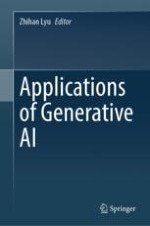2024 | OriginalPaper | Buchkapitel
AI Deep Learning Generative Models for Drug Discovery
verfasst von : Qifeng Bai, Jian Ma, Tingyang Xu
Erschienen in: Applications of Generative AI
Aktivieren Sie unsere intelligente Suche, um passende Fachinhalte oder Patente zu finden.
Wählen Sie Textabschnitte aus um mit Künstlicher Intelligenz passenden Patente zu finden. powered by
Markieren Sie Textabschnitte, um KI-gestützt weitere passende Inhalte zu finden. powered by
